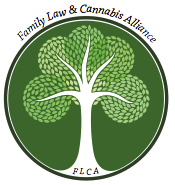Medical marijuana can be a valid form of medical treatment for many pediatric illnesses. From children’s seizure disorders such as Dravet Syndrome, to palliative care for children with cancer, cannabis provides symptom relief, alleviation of side effects from other medications (such as chemotherapy), and gives children a quality of life they would be unable to experience any other way. This page offers peer-reviewed clinical studies on treatment using oils and synthetic cannabinoid pharmaceutical medications.
Controlled Studies with Cannabinoid Treatment in Children
Dalzell, A.M., Bartlett, H., & Lilleyman, J.S. (1986). Nabilone: an alternative antiemetic for cancer chemotherapy. Archives of Disease in Childhood, 61(5), 502–505. (full free text)
Chan H.S., Correia J.A., & MacLeod S.M. (1987). Nabilone versus prochlorperazine for control of cancer chemotherapy-induced emesis in children: a double-blind, crossover trial. Pediatrics, 79(6), 946-952.
Case Reports on Cannabinoid Treatment in Children
- Gottschling S. (2011) Cannabinoide bei Kindern (Cannabis in Children). Angewandte Schmerztherapie und Palliativmedizin, 1, 55-57. (German language only)
- Kurz, R. & Blaas, K. (2010). Use of dronabinol (delta-9-THC) in autism: A prospective single-case-study with an early infantile autistic child. Cannabinoids, 5(4), 4-6.
- Lorenz, R. (2002). A casuistic rationale for the treatment of spastic and myocloni in a childhood neurodegenerative disease: neuronal ceroid lipofuscinosis of the type Jansky-Bielschowsky. Neuroendocrinology Letters, 23(5-6), 387-390. (free full text)
- Lorenz, R. (2003, September). Experiences with THC-treatment in children and adolescents. IACM Conference on Cannabinoids in Medicine, Cologne.
- Lorenz, R. (2004). On the application of cannabis in paediatrics and epileptology. Neuroendocrinology Letters, 25(1-2), 40-44. (free full text)
Last updated: January 5, 2014 at 16:26 pm




